Do you have a question about the Kenwood KDC-X717 and is the answer not in the manual?
Important safety, regulatory, and compliance information.
Essential precautions to prevent injury, fire, and machine damage.
Details for connecting a disc changer, including switch settings.
Warning against inserting 3-inch CDs to prevent unit damage.
Explains the use and effect of the reset button for troubleshooting.
Notes on how display illustrations may differ from actual equipment.
Instructions for cleaning faceplate terminals, the unit, and the CD slot.
Explanation of lens fogging and how to resolve it.
Guidelines for handling CDs to prevent scratches and damage.
Recommendations for storing CDs to protect them from environmental damage.
Method for cleaning dirty CDs to ensure proper playback.
How to check new CDs for burrs that may affect playback.
Discourages the use of CD slot accessories that can cause malfunctions.
Correct procedure for removing a CD from the unit.
Warnings against using special shape or stickered CDs.
Details on how the faceplate reverses for power on/off and security.
Precautions for using the unit in vehicles with covered consoles.
How to increase or decrease the audio volume.
How to quickly reduce the volume using the attenuator.
Navigating through different audio sources like Tuner, CD, AUX, and Standby.
How to activate standby mode to turn off all functions except display.
Adjusting low and high tones based on volume level.
Selecting preset sound quality settings for different music genres.
Fine-tuning audio based on speaker type and subwoofer configuration.
How to adjust the faceplate angle for better viewing.
Switching between different display modes for information presentation.
Selecting information to display on the upper part of the screen.
Selecting information to display on the lower part of the screen.
Using a feature to hide the control panel for security when serviced.
Step-by-step guide on how to detach and reattach the unit's faceplate.
Turning the non-fading output function on and off.
Adjusting various sound quality parameters like bass, middle, and treble.
Fine-tuning the bass center frequency, level, and quality factor.
Enhancing low-frequency response by extending the bass.
Adjusting middle and treble center frequencies, levels, and quality factors.
Controlling speaker balance, fader, and non-fading output levels.
Setting crossover frequencies for front, rear, and non-fading outputs.
Adjusting phase for non-fading output and source volume levels.
Identification of tuner controls and key display indicators.
How to tune into stations using Auto Seek, Preset Seek, and Manual modes.
Storing and recalling favorite radio stations using preset buttons.
Automatically storing receivable stations within a band.
Inputting specific station frequencies directly for quick access.
Assigning names to preset radio stations for easier identification.
Using remote buttons for direct alphabetical input of station names.
Searching for preset stations by their assigned names.
Overview of Radio Data System features and indicators.
Information about RDS data transmission and the RDS indicator.
Handling emergency alerts and scrolling radio text information.
Tuning stations based on selected program types (e.g., News, Music).
Seeking stations by program type and changing preset button settings.
How to register non-RDS stations as a program type for seeking.
Step-by-step guide to playing CDs, including insertion and playback start.
How to pause and resume playback of a CD.
Procedure for ejecting a CD from the unit.
Connecting and playing optional external players or discs.
How to pause and resume playback for external discs.
Controls for fast forwarding and reversing playback of discs.
Searching for specific tracks forward or backward on a disc.
Searching for and selecting specific discs in a changer.
Previewing the beginning of each track on a disc.
Setting track or disc repeat play for continuous listening.
Playing tracks on a disc in a random order.
Scrolling CD text, MD titles, and radio text information.
Storing custom names for discs for easier identification during playback.
Using remote buttons for direct alphabetical input of disc names.
Playing tracks from all discs in a changer in random order.
Using the remote to directly input and play a specific track.
Using the remote to directly input and play a specific disc.
Searching for and playing discs by their preset names.
How to enter, navigate, and exit the unit's menu settings.
Step-by-step guide to setting up a security code to prevent theft.
Enabling or disabling beep sounds for button operations.
Manually setting the current time and date for the unit.
Choosing the desired date format for the calendar function.
Inputting text and setting dates for calendar display.
Automatically synchronizing the clock with RDS time data.
Switching between icon and spectrum analyzer display modes.
Changing the button illumination color between green and red.
Selecting between different display types (vertical, full screen).
Adjusting display brightness based on car's light switch status.
Adjusting the display brightness (dimming).
Setting the time interval for hiding the control panel.
Enabling or disabling System Q sound quality factors.
Controls for amplifier mute and dual zone audio output.
Adjusting the bass boost level for external amplifiers.
Listening to traffic information and its automatic interruption feature.
CRSC for FM reception and text scrolling options.
Instructions for loading and replacing batteries in the remote control.
Overview of essential remote control buttons like volume.
Using SRC, ATT, TUNE, and AM/FM buttons on the remote.
Using DIRECT/OK, DNPP, PTY, and Number/letter entry buttons.
Using track/disc search, pause/play, and disc name input buttons.
List of accessories provided with the unit.
Step-by-step guide for installing the unit in a vehicle.
Detailed diagram showing how to connect wires to terminals.
How to lock the faceplate to the unit to prevent it from falling off.
Steps to remove the hard rubber frame as part of unit removal.
Detailed procedure for removing the main unit from its mounting.
Specific instructions for installing the unit in Japanese-made cars using brackets.
Solutions for the unit not turning on or responding to buttons.
Troubleshooting poor radio reception and memory erasure.
Resolving issues with the faceplate and inconsistent sound quality.
Fixing issues related to low volume, poor sound quality, or distortion.
Solutions for CDs ejecting, skipping, or not playing.
Troubleshooting when a disc cannot be removed from the unit.
Resolving issues with selecting disc modes or playback errors.
Solutions for playing CD-R/CD-RW discs and compatibility issues.
Solutions for common error messages like Eject, No Disc, and TOC Error.
Troubleshooting specific error codes and mechanical issues.
Addressing overheating issues (Hold Error) and CD player malfunctions (IN indicator).
Detailed technical specifications for the FM and AM tuner sections.
Technical data for the CD player, audio output, and tone controls.
Overall unit specifications including voltage, current, size, and weight.
| frequency range | 87.9MHz~107.9MHz |
|---|---|
| usable sensitivity | 9.3dBf(0.8µV/75Ω) |
| quieting sensitivity | 15.2dBf(1.6µV/75Ω) |
| frequency response | 30Hz~15kHz |
| S/N ratio | 70dB(MONO) |
| selectivity | ≥ 80dB(±400kHz) |
| stereo separation | 40dB(1kHz) |
| frequency range | 530kHz~1700kHz |
|---|---|
| usable sensitivity | 28dB µ(25µV) |
| channel space selection | 9k/10kHz |
| laser diode | GaAIAs(λ=780nm) |
|---|---|
| digital filter | 8 Times Over Sampling |
| D/A converter | 1Bit |
| spindle speed | 500~200(CLV) |
| frequency response | 10~20kHz(±1dB) |
| total harmonic distortion | 0.01%(1kHz) |
| S/N ratio | 105dB(1kHz) |
| dynamic range | 93dB |
| channel separation | 96dB |
| preout level/load | 4500mV/10kΩ(CD/CD-CH) |
|---|---|
| preout impedance | 80Ω |
| maximum power | 50W×4 |
| full bandwidth power | 22W×4 (at less than 1%THD) |
| operating voltage | 14.4V (11V~16V allowable) |
|---|---|
| current consumption | 10A |
| installation size (W) | 182mm(7-3/16in) |
| installation size (H) | 53mm(2-1/16in) |
| installation size (D) | 162mm(6-3/8in) |
| weight | 1.9kg(4.2lbs) |

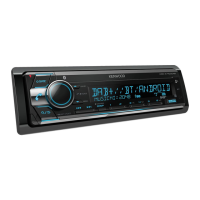
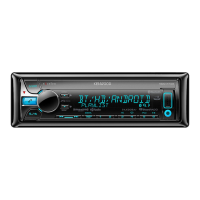


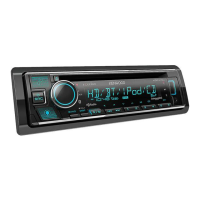
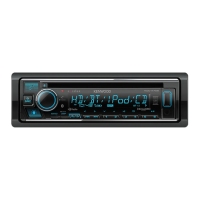
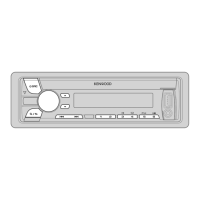

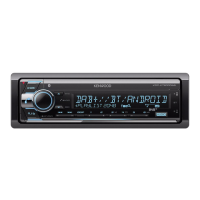
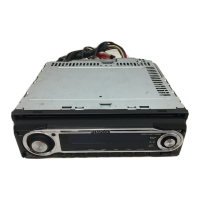
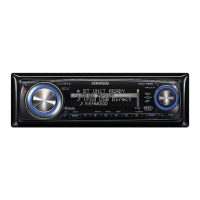
